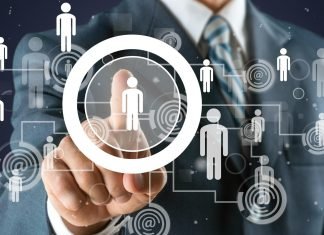In an era marked by an acute employee shortage across various industries, the imperative to innovate recruitment practices has never been more critical. This article delves into how Artificial Intelligence (AI) and Machine Learning (ML) are revolutionizing talent acquisition, offering a beacon of hope in this crisis. By blending cutting-edge technology with nuanced human insight, AI-driven platforms promise a significant reduction in hiring time while ensuring a high caliber of talent acquisition.
Understanding the Employee Shortage Crisis
The contemporary job market in the United States is experiencing an employee shortage, significantly impacting various sectors from technology to healthcare. This shortage is more than just a numerical deficit of workers; it reflects a deeper misalignment between the skills available in the labor pool and those demanded by emerging industries. A report by the U.S. Chamber of Commerce indicates that 90% of employers faced difficulties in filling positions due to a lack of qualified applicants in 2022, underscoring the severity of the crisis.
Traditional recruitment methods, largely reliant on manual screening and conventional hiring channels, are increasingly inadequate in this evolving scenario. They struggle with the dual challenge of volume and specificity: identifying candidates in large applicant pools while ensuring they possess the unique skill sets required for specialized roles. This often results in prolonged vacancy periods and significant opportunity costs for businesses.
Moreover, the rapid pace of technological advancement and the shift to remote work paradigms have further complicated the hiring landscape. Companies are now vying for talent in a global marketplace, where the right match is not just about qualifications, but also cultural fit, adaptability, and alignment with remote work norms.
The consequences of the employee shortage are far-reaching, affecting organizational growth, innovation potential, and competitive positioning. It’s clear that addressing this crisis requires more than traditional tactics; it calls for a strategic reimagining of talent acquisition, where technology and human expertise converge to create a more dynamic, responsive, and efficient hiring ecosystem.
The Emergence of AI and ML in Recruitment
The integration of AI and ML into recruitment processes marks a significant leap forward in tackling the employee shortage crisis. These technologies bring a host of advantages that not only streamline the hiring process but also enhance its effectiveness. Here, we explore the myriad benefits of AI and ML in recruitment.
1. Speeding Up the Recruitment Process: One of the most immediate benefits of AI in recruitment is the remarkable acceleration of the hiring process. AI algorithms can quickly parse through thousands of resumes, identifying suitable candidates in a fraction of the time it takes human recruiters. This rapid processing capability is crucial in a market where speed often determines the acquisition of top talent.
2. Enhanced Candidate Matching: AI systems employ sophisticated algorithms to match candidates with job requirements more accurately than traditional methods. By analyzing data points such as work experience, educational background, skills, and even social media activity, AI provides a multi-dimensional assessment of candidates, ensuring a better fit for the role.
3. Reducing Unconscious Bias: AI can help mitigate unconscious bias in the hiring process. By focusing on data and predefined criteria, AI systems can make objective decisions, promoting a more diverse and inclusive workforce. This is particularly important in building teams that bring a variety of perspectives and backgrounds.
4. Improved Candidate Experience: AI-driven recruitment tools can offer candidates a more engaging and interactive experience. Chatbots, for instance, can provide instant responses to queries, schedule interviews, and give feedback, enhancing the candidate’s journey and potentially improving their perception of the company.
5. Predictive Analytics for Future Hiring: ML algorithms can analyze historical hiring data to predict future recruitment needs. This predictive capability allows companies to proactively address talent shortages, plan workforce expansions, and prepare for industry-specific hiring trends.
6. Cost-Effective Recruitment: By automating routine tasks and improving the efficiency of the recruitment process, AI and ML can significantly reduce hiring costs. These savings stem from reduced time-to-hire, lower dependence on external recruitment agencies, and the ability to tap into broader talent pools without geographical constraints.
7.Continuous Learning and Improvement: ML algorithms are designed to learn and improve over time. This means that the more data they process, the better they become at identifying suitable candidates. Continuous learning ensures that the recruitment process evolves in line with changing job market dynamics and company needs.
8. Global Talent Reach: AI-powered recruitment platforms can easily scale to accommodate global talent searches. They can process applications from various countries, in multiple languages, and evaluate candidates based on a universal set of criteria, making global hiring more accessible and efficient.
9. Enhanced Data Security: With the increasing importance of data privacy, AI systems in recruitment come equipped with robust security measures to protect sensitive candidate information. This not only ensures compliance with data protection regulations but also builds trust with candidates.
10. Integration with HR Systems: AI tools can seamlessly integrate with existing Human Resource Management Systems (HRMS), creating a unified platform that manages the entire recruitment lifecycle from sourcing to onboarding.
11. Analytical Insights for Strategic Decisions: AI provides valuable analytics and insights into the recruitment process, such as sources of successful hires, time-to-fill metrics, and candidate engagement levels. These insights are instrumental in making informed strategic decisions and optimizing recruitment strategies.
12. Cultural Fit and Soft Skills Assessment: Beyond hard skills, AI can also help assess a candidate’s cultural fit and soft skills. Through natural language processing and sentiment analysis, AI tools can analyze a candidate’s communication style, values alignment, and other intangible qualities critical for team integration.
The adoption of AI and ML in recruitment is not just a technological upgrade; it’s a strategic transformation. These technologies offer a comprehensive solution to the challenges of the modern job market, ensuring that companies not only fill positions quickly but also secure the right talent to drive their growth and success.
The Human Element in AI-Driven Recruitment
While AI and ML significantly enhance the recruitment process, the human element remains an indispensable part of hiring. Human intuition and emotional intelligence play a crucial role, especially in assessing aspects such as cultural fit, interpersonal skills, and the potential for long-term success within a company. Recruiters and hiring managers bring a level of understanding and empathy to the process that cannot be replicated by algorithms. Their insights are particularly vital when interpreting nuances in a candidate’s experience and aspirations, which often go beyond what is presented on a resume. Moreover, human interaction in the recruitment process fosters a personal connection with candidates, enhancing their experience and perception of the company. This human touch is essential in creating an engaging and respectful candidate journey, which in turn can positively influence a candidate’s decision to join and remain with an organization.
Balancing AI efficiency with human judgment is thus key to a holistic and effective recruitment strategy.
The best approach is a synergistic one, where AI tools handle the quantitative analysis and initial screening, leaving humans to focus on qualitative assessment and final decision-making. This synergy ensures that recruitment is not only swift and efficient but also nuanced and considerate of the human aspects of hiring. By integrating AI’s analytical prowess with human discernment, companies can achieve a more dynamic, responsive, and humane hiring process, ultimately leading to the formation of a more cohesive and productive workforce.
Conclusion
The integration of AI and ML into recruitment heralds a new era in talent acquisition, offering innovative solutions to the employee shortage crisis. While these technologies streamline the hiring process and enhance its efficiency, the future of recruitment lies in a balanced approach that combines AI’s analytical prowess with the irreplaceable human touch. As we embrace this technological transformation, it is crucial to navigate the challenges responsibly, ensuring ethical practices, data security, and maintaining the human connection in recruitment. Looking ahead, the continued evolution of AI in hiring promises not only to reshape how organizations find and retain talent but also to play a pivotal role in shaping a more dynamic, inclusive, and efficient workforce. Embracing this change, companies can strategically position themselves to meet the challenges of the modern job market, fostering growth and innovation in an ever-evolving global landscape.
Explore HRtech News for the latest Tech Trends in Human Resources Technology
ABOUT THE AUTHOR

Bryan DiGiorgio,
Founder and CEO of 1840 & Company
Bryan DiGiorgio is the Founder and CEO of 1840 & Company, a global outsourcing provider specializing in Business Process Outsourcing and staff augmentation services. Bryan is revolutionizing the way businesses approach staffing and talent management through a scalable, globally focused model. With a background in entrepreneurship and corporate leadership, he founded 1840 & Company to address the inefficiencies in traditional hiring methods. Before this, he led Workspace Communications and held senior roles at companies like Sprint and Vonage, specializing in customer operations and service delivery.














